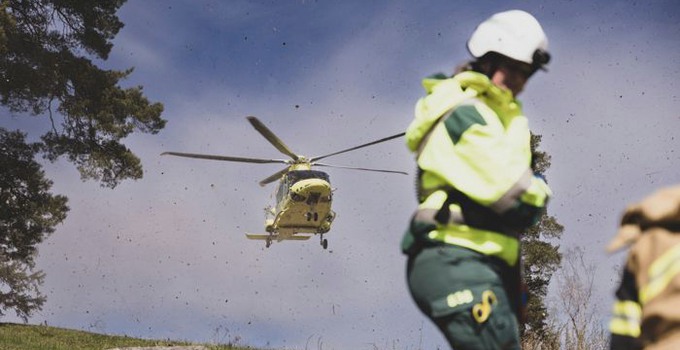
Foto: Joel Thungren / Försvarsmakten.
Civil-military joint exercises are ineffective
Researchers at the Swedish Defence University have examined whether exercises intended to promote civil-military collaboration lead to improved cooperation.
"The results show that the exercises did not result in clear learning for the participants," says Erik Hedlund.
A recent study published in the Journal of Contingencies and Crisis Management shows that regional civil-military exercises only marginally improve participants' ability to collaborate. This is due, among other things, to a lack of alignment of educational goals, activities, and assessments, as well as significant variations in the participants' experiences and knowledge, which hinder effective learning.
"Moreover, defensive routines, such as not acknowledging difficulties and flaws in the exercises, combined with insufficient knowledge of laws and regulations, hinder effective collaboration and learning," says Erik Hedlund, Associate Professor at the Department of Leadership and Command & Control at the Swedish Defence University.
The study highlights how a lack of understanding of the participants' respective organizations and different communication routines obstruct effective collaboration.
"Increasing awareness of these differences is a first step towards overcoming them, which can lead to more integrated and effective collaboration during crises," Hedlund suggests.
More effective exercises with educational method
Another way to make the exercises more effective and improve participants' ability to collaborate is to use the educational model of constructive alignment to analyze goals, teaching, and assessments. The method includes three main elements: identifying learning objectives, teaching and learning activities, and assessment of tasks.
"This model explains how these elements should be adapted to optimize learning within civil-military collaboration. It aims to ensure that teaching and assessments effectively support the intended goals," says Erik Hedlund.
However, the model needs to be supplemented with the variable of contextual support, i.e., the structural and organizational conditions that support or hinder the team's learning processes, such as the number of participants, their prior knowledge, and the duration of the exercise.
"Paying attention to participants' defense mechanisms is also crucial for identifying and mitigating potential barriers to constructive solutions and avoiding exercises that do not contribute to increased capability for civil-military collaboration," says Aida Alvinius, Professor at the Department of Leadership and Command & Contol at the Swedish Defence University.
Regional-level civil-military exercises
The study examined seven civil-military exercises conducted between 2022 and 2023 with 661 participants from seven to 40 organizations, primarily at the regional level. The exercises were civil-military collaboration exercises with scenarios to discuss and analyze roles and responsibilities. Data collection was conducted through document analysis and participant observation.
Josefin Svensson
Publication
Hedlund, E., & Alvinius, A. (2024): Exercises for developing civil‐military collaboration capability: A constructive alignment analysis. Journal of Contingencies and Crisis Management.
What is civil-military cooperation?
Civil-military cooperation is a collaboration between military and civilian actors to achieve common goals, especially in areas such as disaster response, crisis management, and peacekeeping or stabilization operations. The collaboration can include a variety of actors such as national authorities, international organizations, non-governmental organizations (NGOs), local or regional authorities, and civil society.
The purpose of civil-military cooperation is often to enhance the effectiveness of humanitarian efforts, strengthen security and stability in a region, and promote reconstruction and development following conflicts or natural disasters.
More about
Page information
- Published:
- 2024-07-02
- Last updated:
- 2024-07-02
